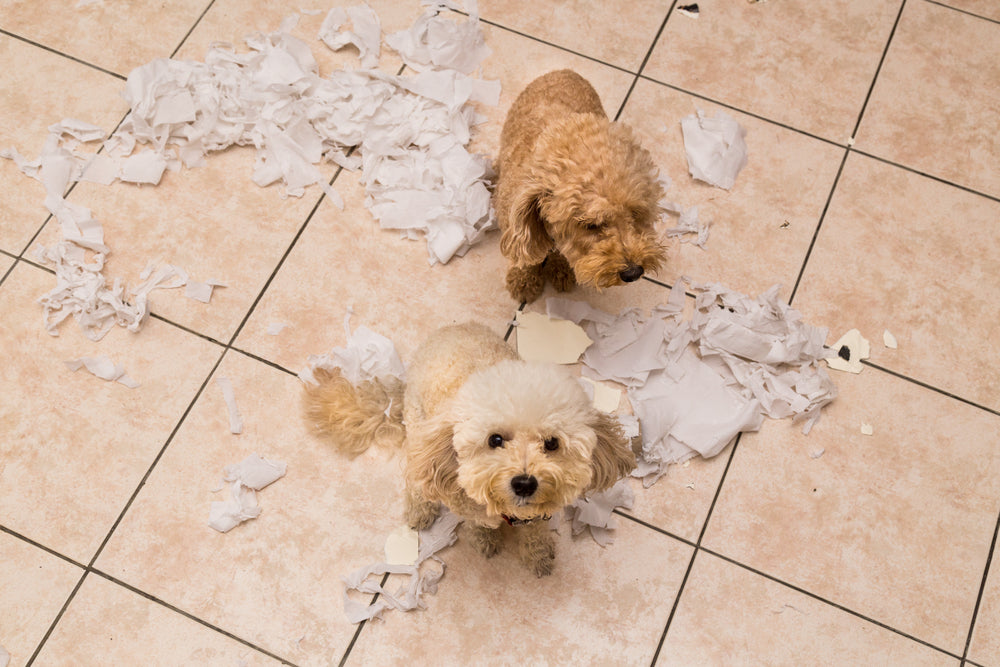Like most new or old dog owners, you may be wondering why your dog constantly seems to want to gnaw, chew or scratch at your doors. More importantly, you likely struggle to figure out how to get him to stop from doing so!
Alas, you're not alone, as this is an age-old problem that most pet parents have faced. We adore our furry companions beyond belief, we just don't love the damage they can cause to our doors, door jambs and other part of our homes.
Fortunately, there is a solution!
First you must understand exactly why he or she is scratching; then you can move forward with positive training to curb this behavior and prevent further damage to your home, as well as to their nails, teeth, gums and digestive systems.
It's a win-win; your dog gets what he wants without having to continuously scratch for awareness and your home remains damage-free.
Why Do Dogs Scratch Doors?
If your dog scratches a door when he's outside, it clearly a sign he or she is trying to get your attention so they can return inside, and vice versa. As dog lovers, we know that we spend the majority of our days letting our dogs out, then letting them back in a few moments later, then letting them back out... and so on ad nauseam.
If your dog is inside and is scratching at the door, they could be scratching because:
- They want to go outside to go potty.
- They hear a noise outside and they want to investigate.
- They are bored.
- They are experiencing dog separation anxiety.
- They just want attention.
A dog that communicates through scratching should be taught other ways to communicate that do not include them causing damage to the house.
Even more, when your dog scratches, they can also cause damage themselves. They could break his or her nails or get wood splinters in their paw pads. If they scratch a door enough, they often start to gnaw on the damaged wood, which may cause damage to their intestines if swallowed.
4 Tips To Prevent Dog Scratching Damage
If your dog scratches when they have to go to the bathroom, teach them other methods of communication, like ringing a bell or approaching you before running toward the door. As a responsible pet owner, it's your responsibility to determine what works best for both you and your dog to communicate.
Also, if you don't already understand his methods of communication, it's important to learn about body language so you can understand what he has to say.
Intall A Doggy Door
Create A Barrier To Prevent Dog Scratching
Establish A Scheduled Routine
Install a Clawguard Door Protector
CLAWGUARD builds shields that help protect homes from dog damage and cat damages. Products include door shields, couch guards, and universal protective tape that protects commonly scratched areas like window sills, furniture, banisters, weatherstripping and more. Check us out on Amazon and read our many FIVE STAR reviews!
Follow us on Pinterest and Instagram to see and share pictures.
